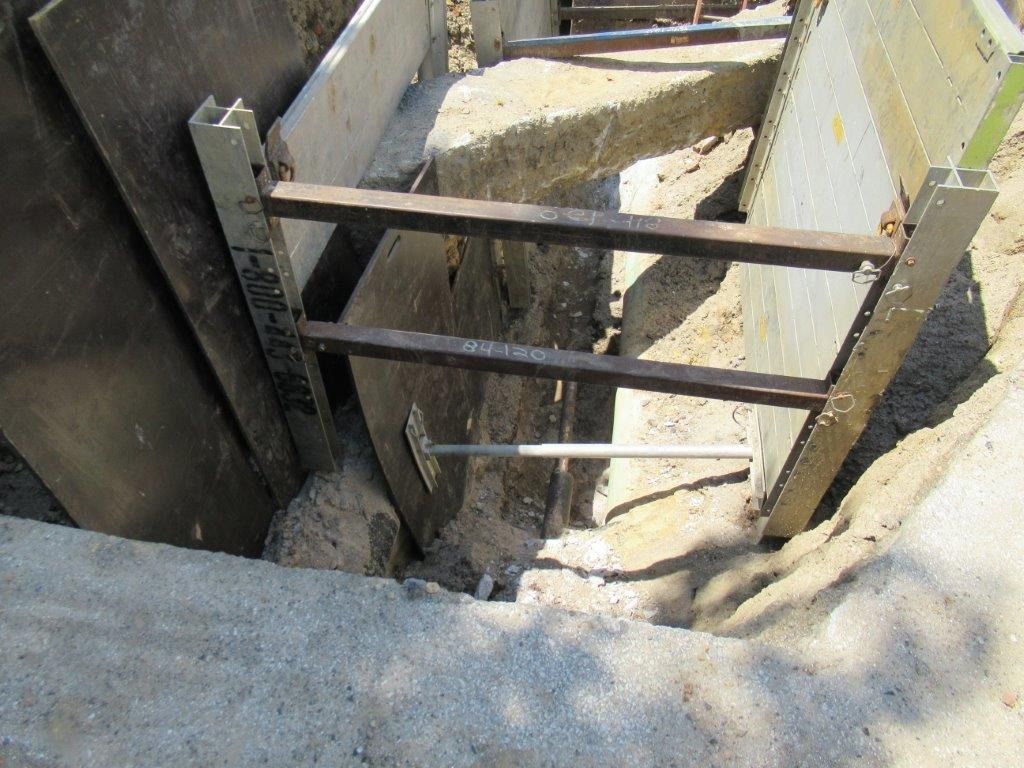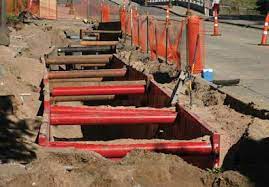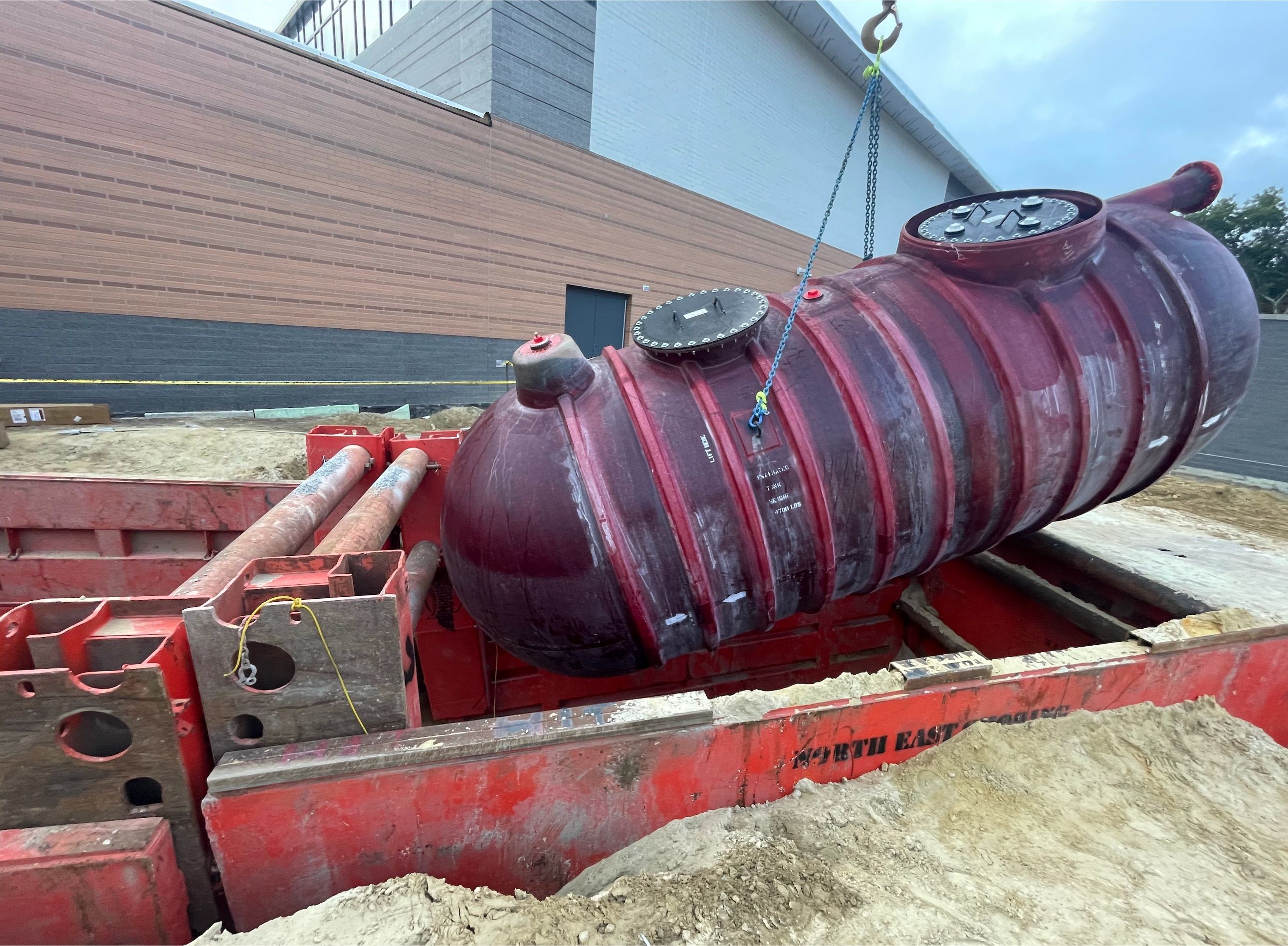Introduction
Trench safety is essential in excavation work
Excavation sites are among the most hazardous work environments in construction. Without proper safety measures, workers are at risk of serious injuries or fatalities due to trench collapses. Trench safety is not just a recommendation; it is a necessity to protect lives and maintain safe working conditions.
The dangers of trench collapses and worker injuries
Trench collapses happen suddenly and with tremendous force. A single cubic yard of soil can weigh more than a car, making it nearly impossible for a trapped worker to escape without assistance. Many excavation-related injuries occur because of improper protective systems or a lack of safety awareness on job sites.
OSHA regulations ensure trench safety compliance
The Occupational Safety and Health Administration (OSHA) has established strict trench safety regulations to prevent accidents. These regulations require protective systems for trenches deeper than five feet and mandate regular inspections by a competent person. Failing to follow these guidelines can lead to severe penalties, project delays, and most importantly, preventable injuries or fatalities.
Helping contractors follow OSHA trench safety rules
This blog will guide contractors through OSHA trench safety requirements, best practices for compliance, and strategies to ensure excavation sites remain secure. Understanding and following these regulations will help businesses protect workers, avoid fines, and improve overall job site safety.
What is OSHA and Why Does Trench Safety Matter?
OSHA regulates workplace safety standards
The Occupational Safety and Health Administration (OSHA) is a federal agency responsible for enforcing safety regulations in workplaces, including construction sites. Its primary goal is to protect workers from hazards that can cause serious injuries or fatalities. OSHA sets and enforces trench safety guidelines to ensure that excavation work is done safely and with proper protective measures.
Trench safety is critical for worker protection
Trenches are inherently unstable, and even well-dug trenches can collapse if not properly secured. Trench safety measures, such as trench boxes, sloping, and benching, help stabilize excavation sites and prevent cave-ins. By following OSHA safety guidelines, contractors can significantly reduce the risk of accidents and create a safer work environment.
Trench collapses are a leading cause of fatalities
Trench collapses are one of the deadliest risks in construction. According to OSHA, trench-related fatalities are often the result of inadequate protective systems or failure to follow proper safety procedures. Workers caught in a collapse can be buried under thousands of pounds of soil within seconds, making rescues difficult and often unsuccessful.
OSHA enforces penalties for non-compliance
OSHA takes trench safety violations seriously and imposes heavy fines on companies that fail to follow regulations. Penalties can range from thousands to hundreds of thousands of dollars, depending on the severity of the violation. More importantly, non-compliance can lead to preventable injuries and loss of life, affecting workers and their families. Ensuring compliance with OSHA trench safety regulations is not just about avoiding fines; it is about protecting lives and maintaining a safe worksite.
Key OSHA Trench Safety Regulations
Protective systems are required for trenches deeper than five feet
OSHA mandates that any trench deeper than five feet must have a protective system in place to prevent cave-ins. These protective systems include sloping, benching, shoring, and trench boxes. Sloping involves cutting back the trench walls at an angle, while benching creates step-like formations in the trench wall to reduce soil pressure. Shoring uses hydraulic supports to brace trench walls, and trench boxes provide a sturdy protective structure for workers. If a trench is deeper than 20 feet, a professional engineer must design the protective system to ensure structural integrity and worker safety.
Soil classification determines trench safety requirements
OSHA categorizes soil into three types: Type A, Type B, and Type C. Type A soil is the most stable, requiring minimal protective support, while Type C is the least stable and demands the highest level of protection. Contractors must assess soil conditions before excavation to determine which protective system is needed. Soil testing methods include the pocket penetrometer test, thumb penetration test, and visual inspection to check for moisture content and layering. Failure to classify soil properly can lead to trench collapses and serious safety risks.
Safe access and exit points are mandatory in trenches over four feet deep
OSHA requires that any trench deeper than four feet must have a safe entry and exit point. Workers must use ladders, ramps, or steps positioned within 25 feet of their work area. These access points must be secured and free from obstructions to prevent falls or delays in case of emergencies. A clear exit route is crucial, as blocked or unstable access points can put workers in danger if they need to evacuate quickly.
Atmospheric and water hazards must be controlled in trenches
Before workers enter a trench, OSHA requires testing for hazardous atmospheres, including low oxygen levels, toxic gases, or flammable vapors. Trenches with high water accumulation present additional risks, as water can weaken trench walls and lead to sudden collapses. Proper drainage systems, dewatering pumps, and ventilation equipment should be used when necessary to maintain a safe working environment. Workers must also wear appropriate personal protective equipment, such as respirators or waterproof gear, when dealing with these hazards.
Best Practices for OSHA Trench Safety Compliance
Daily trench inspections are required before work begins
OSHA mandates that a competent person inspect all trenches before work starts each day. This inspection should identify potential hazards such as shifting soil, accumulated water, or trench box misalignment. A trench safety checklist should include checking for proper protective systems, ensuring clear access points, and confirming that trench boxes or shoring are secure. Documenting these inspections is essential for compliance and provides a record of safety measures taken on-site.
Workers must be trained in excavation safety procedures
All workers involved in excavation must receive proper training on trench safety. OSHA requires that workers understand hazard identification, emergency response plans, and personal protective equipment use. Training should also cover proper trench entry and exit procedures, safe use of trench boxes, and how to handle unexpected soil conditions. Ongoing safety programs ensure that workers stay up to date on best practices and help prevent accidents caused by human error.
Emergency response plans must be in place for trench accidents
Every excavation site should have a clear emergency response plan for trench collapses or worker entrapments. OSHA recommends that all employees be trained on the proper steps to take in case of an emergency, including notifying supervisors, using rescue equipment, and evacuating safely. Workers should never attempt to rescue a trapped colleague without proper training, as this can lead to additional injuries. Keeping rescue tools, such as lifelines and air supply equipment, on-site at all times ensures that emergency response efforts can be carried out efficiently. Effective communication among team members is also critical in preventing panic and ensuring a coordinated response in dangerous situations.
Common OSHA Trench Safety Violations and How to Avoid Them
Lack of protective systems increases the risk of cave-ins
One of the most common OSHA violations in trenching is failing to use proper protective systems. Trenches deeper than five feet require trench boxes, shoring, or other safety measures to prevent collapses. Without these protections, workers are at high risk of being buried under shifting soil. Contractors must ensure that every excavation site follows OSHA guidelines by implementing the correct trench safety system before work begins.
Failure to inspect trenches daily leads to hidden hazards
OSHA requires that a competent person inspects trenches daily to identify potential hazards. Ignoring this step can result in unstable soil conditions, unnoticed water accumulation, or weakened trench boxes. A daily inspection should include checking for soil movement, confirming trench box stability, and ensuring safe entry and exit points. Keeping a documented record of these inspections helps maintain compliance and prevents accidents.
Unsafe entry and exit points create unnecessary risks
Trenches deeper than four feet must have ladders, ramps, or steps within 25 feet of every worker. Many job sites violate this requirement by failing to provide adequate access points, making it difficult for workers to exit in case of an emergency. Properly secured ladders or engineered ramps should be in place before anyone enters the trench to ensure safe movement in and out of the excavation site.
Ignoring soil conditions weakens trench stability
Soil classification is a critical step in excavation safety, but many contractors skip this process or fail to apply the right protective system. OSHA categorizes soil into three types: Type A, Type B, and Type C, with Type C being the least stable and requiring the most protection. If a trench collapses due to misclassified soil, workers face serious injury or death. Contractors should always conduct soil tests before excavation and use the appropriate trench safety solution based on soil conditions.
Poor worker training leads to preventable accidents
Many trenching violations stem from inadequate worker training. Employees must be educated on excavation safety procedures, hazard recognition, and emergency response plans. Without proper training, workers may misuse trench boxes, fail to identify potential dangers, or enter hazardous trenches. Regular safety training sessions and hands-on demonstrations help ensure that workers understand and follow OSHA trench safety regulations.
Where to Find OSHA-Compliant Trench Boxes
North East Shoring offers trusted trench protection solutions
For contractors looking for OSHA-compliant trench protection systems, North East Shoring is a reliable provider of high-quality trench boxes. Their selection includes both steel and aluminum trench boxes, ensuring that excavation projects meet safety requirements and stay compliant with regulations.
Flexible rental and purchase options for trench safety
North East Shoring provides flexible rental options for contractors who need short-term trench protection. For long-term projects, purchasing a trench box is a cost-effective solution. Whether a business needs a temporary or permanent safety solution, North East Shoring offers options tailored to project needs.
Get expert guidance and request a free quote
Choosing the right trench box can be challenging, especially when considering soil conditions, trench depth, and OSHA requirements. North East Shoring offers expert advice to help contractors select the best trench safety equipment. Businesses can request a free quote to find the most suitable trench protection solution for their specific job site.
Conclusion
Following OSHA trench safety guidelines saves lives
Trench safety is essential for preventing workplace accidents and ensuring that excavation sites comply with OSHA regulations. Protective systems, daily inspections, and proper worker training reduce the risk of trench collapses and create a safer work environment.
Regular inspections and worker education are key to compliance
By conducting daily inspections, classifying soil correctly, and ensuring workers are trained in excavation safety, contractors can avoid common OSHA violations. Implementing these practices not only keeps workers safe but also prevents costly fines and project delays.
Contact North East Shoring for OSHA-compliant trench boxes
Contractors in need of reliable trench safety solutions can turn to North East Shoring for high-quality trench boxes. Contact their team today to request a free quote and ensure compliance with OSHA trench safety regulations on your next excavation project.




